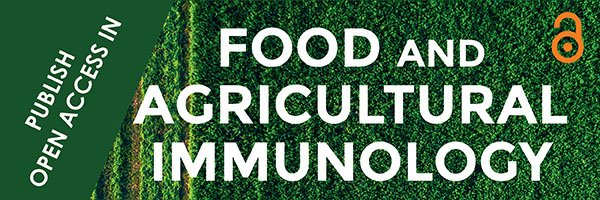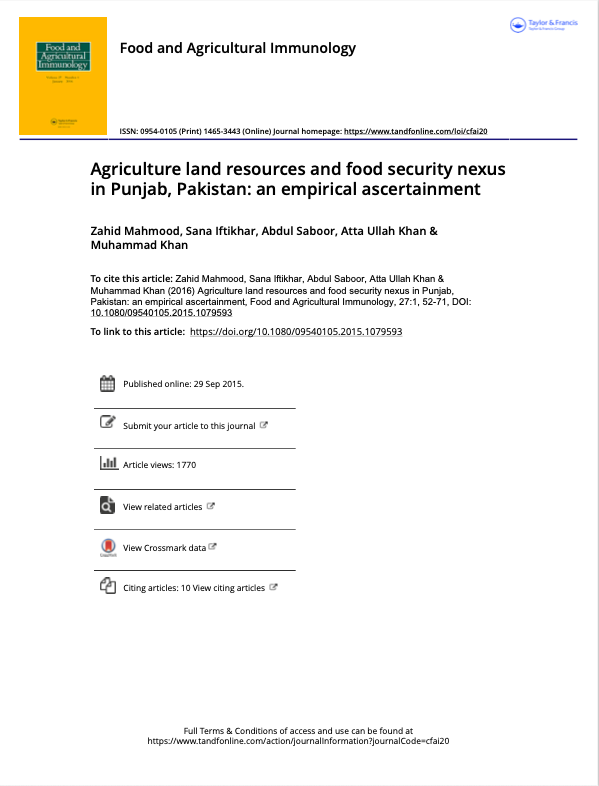Location
Food and Agricultural Immunology is an international open access journal publishing immunological research with applications in food, agricultural, environmental and veterinary science.
Food and Agricultural Immunology aims to expand our understanding of the interactions at the interface of food and immune systems. It is essential reading for food scientists, immunologists and all those concerned with the interaction between food and immune systems.
Food and Agricultural Immunology covers the following topics:
- Development of diagnostic systems – all types of ligand-based assays, e.g. antibody, aptamer
- Application of ligand-based assays for the detection or identification of molecules of interest in food science, agricultural research, veterinary investigations and clinical systems relating to food allergy or sensitivity to agricultural chemicals
- Effects of food on the immune system
- Studies on allergy and allergic reactions and investigations into food allergies
- Development of allergen-free food systems
- Development of novel assay formats
- Applications of assay systems to the monitoring of food items in relation to safety and labelling
- Food quality issues, e.g. speciation, adulteration and contamination
- Comparisons between different analytical techniques and the use of immunological techniques and methods
The journal accepts original research and review articles.
The journal operates a single-blind peer review policy. All articles will be made freely and permanently available online through gold open access publication.
Members:
Resources
Displaying 1 - 1 of 1Agriculture land resources and food security nexus in Punjab, Pakistan: an empirical ascertainment
Agriculture is the backbone of Pakistan’s economy. It employs 45% of the labor force, contributes 21.4% to the gross domestic product and provides food to more than 180 million people of the country. The required plethoric resources to produce food correspondingly protect the population against food insecurity. This study explores the distribution of land resources, their ranking and relationships with food security in all districts of Punjab province of Pakistan. The Gini Coefficient and multiple linear regression were employed.



